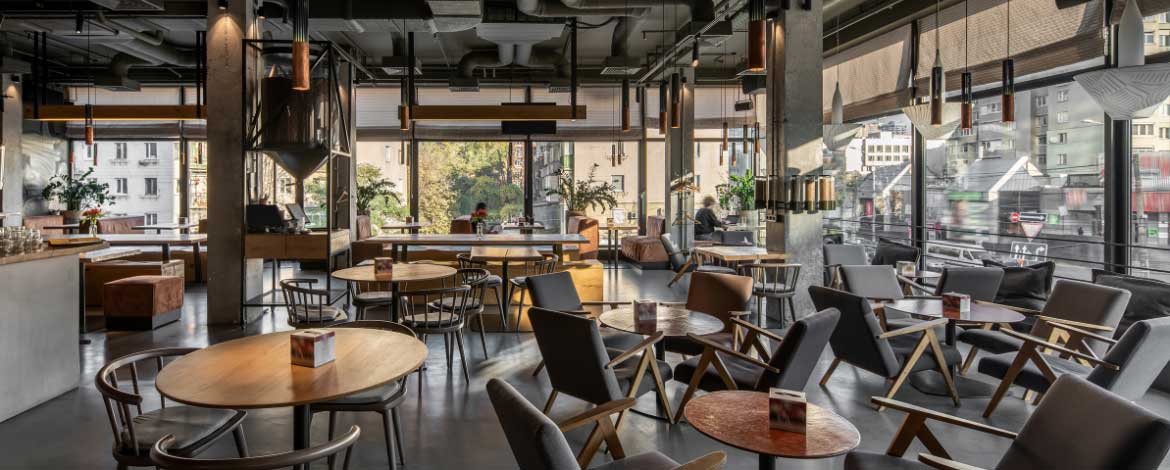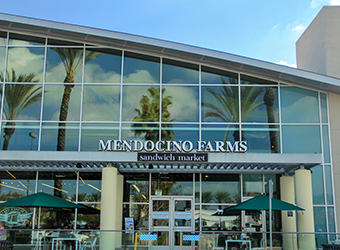Heraclitus, an ancient Greek philosopher, is attributed the oft-quoted “change is the only constant in life.”
For many in facilities management, that insight has never felt more relevant. Facilities managers and operators are facing new challenges and economic forces, and change seems to be the only certain thing the industry can rely on.
One thing you can be sure of is that your restaurant will continue to need to maintain and repair equipment to stay in business. However, you may need to revisit your “business as usual” approach to labor, equipment, and managing facilities.
Operators are facing major challenges in two areas: labor (both in-house and with vendors) and supply chain issues (both for new equipment and for parts). Here, we’ll cover tips to help manage facilities and construction during periods of uncertainty. Adopting a new Computerized Maintenance Management Systems (CMMS) facility strategy may help you find new solutions for labor and facilities management challenges.
Uncertainty #1: Labor Challenges
As most operators will tell you, demand is trending high. Organizations are facing an increase in sales concurrent with a general decrease in available labor. Facility managers are facing higher turnover, reduced availability, and potentially less experienced staff — both internally and with vendors.

Labor Within Your Organization
Much of the labor crunch is affecting entry-level roles. For example, as a restaurant operator you may not have enough servers or cooks to fill out the everyday schedule. Or, you may have noticed a decrease in the experience levels of potential employees, as people trained in the industry move to different verticals. These challenges can take from your managers time, forcing them to spend their time focused on day-to-day functions of the facility rather than managing strategically at a high level.
When it comes to managing facilities, busy operators need a tool to help them efficiently manage maintenance of equipment. Facilities management is a high priority, your operators need to be able to rely on their partnerships with service providers, and yet your management may no longer have the time to call, vet, and follow up with vendors.
Your Service Providers’ Labor Challenges
Service providers are facing the same labor shortage issues that facility managers are, particularly as technician demographics indicate an aging workforce without the same number of new workers. With labor as a challenge, many service providers may be resorting to the 80/20 rule (80% of profit is coming from 20% of customers). To cope with labor shortages, some vendors may not prioritize new customers or existing clients that aren’t in the top 20% of their business.
Addressing Labor Challenges with a Facilities Management Solution and Strong Service Provider Relationships
First, if your facility managers are spread too thin, a CMMS can empower your team to tackle more than ever. A CMMS solution can streamline connecting with service providers and automatically provide all the details that they’ll need (make, model number, maintenance history, etc). Your team can tackle challenges successfully, reduce time on the phone, and increase repair accuracy. They can also use the CMMS platform to track costs, invoice status, and spending in real-time.
Second, a CMMS platform can provide not only streamlined communication, but also help you strengthen your service provider partnerships as well. A CMMS solution like Ecotrak has long-standing relationships with service providers that can help bridge a new relationship between your business and vendors.Ecotrak maintains a vetted group of vendors on our system that each have been invited by a fellow industry professional. Ecotrak also now offers a service provider directly that provides access to vendor names. The directory includes performance indicators, such as time to accept, time to arrive, time to complete, and cost of invoice, allowing you to enter a relationship with a new service provider based on measurable outcomes.
Uncertainty #2: Supply Chain Disruptions For Equipment and Parts
After a few years of unprecedented global complexities, the supply chain for facilities is also facing new challenges in two areas in particular: limitations on equipment manufacturing capability and a shortage of parts.

Delays in Equipment Manufacturing & Shortage of Parts
Global challenges to the supply chain, the rising cost of raw materials, and complicated shipping logistics have roiled the facility equipment industry. Many major manufacturers now are facing a timeline of at least 18 months for production of new equipment.
For an operator, this delayed timeline is changing the standard calculation of repair vs replace. Maybe you planned to replace ovens when they hit 10 years old. Unless your organization is proactively planning equipment orders, you may face major delays with your planned timeline and have to pour money into an asset that should have been already off your books.
For similar reasons, facility operators and service providers are also finding a shortage of parts for equipment. Without planning in advance for replacements, you may lose the functionality of a critical piece of equipment for a relatively small part.
Generally, there aren’t a lot of proactive programs to plan effectively to manage your asset base. But in today’s economy and labor market, it will be difficult for your facility to be efficient and effective without functioning equipment.
Asset-First Philosophy to Face Supply Chain Challenges
To address some of these challenges, a CMMS solution like Ecotrak can facilitate an asset-first philosophy to your asset management program.
What might an asset-first philosophy look like in facilities management?
1. Understanding your most vital pieces of equipment
2. Identifying if there is a common failure or replacement part you may want to stock for your facility “crash kits”
3. Tracking the retirement age of equipment so you can plan very far head for proactive replacement
4. Creating a strong maintenance program to keep your priority equipment running
Let’s go over each of these ideas in detail.
#1 - Understanding your most vital pieces of equipment
Many facilities in today’s economy don’t have redundancy built into them. Think about the most critical piece of equipment that you have — if it goes offline, can you deliver to your customers?
A CMMS can help you track data about your vital equipment. When your asset inventory is cataloged in your CMMS, you have the make, model, serial number, and any warranties centralized on one system. A work order runs through all related data points to check for warranty, and information is automatically sent to the service provider with the work order (particularly helpful if service is also experiencing high turnover or has new employees).
#2 - Identifying if there is a common failure or replacement part you may want to stock for your facility “crash kits”
You don’t want to lose sales because you are waiting for a $20 part for your most critical piece of equipment.
A solution like Ecotrak can help you identify the most common failed parts for your equipment (across your facilities or, with advanced systems, aggregated across a larger data set). When a service provider invoices, they log any parts they replaced. With this data, you can create crash kits for your facilities that contain the most critical, core component parts for your vital equipment.
Now that you’ve supplied your own parts, you can focus on the service provider relationship (and also potentially cut down on service overhead).
#3 - Tracking the retirement age of equipment so you can plan very far ahead for proactive replacement
To address manufacturing delays, operators may need to place a higher emphasis on proactive equipment maintenance. It can be beneficial to pull reports on which equipment is outside useful life, where repair and maintenance dollars are going, and the level of effectiveness of your contracted maintenance. With a consolidated list for your financial planning, facility leadership can make strategic decisions on a long-term, proactive timeline.
#4 - Creating a strong maintenance program to keep your priority equipment running
Your CMMS can be used to track the age of your equipment and assets that have depreciated based on industry standards or your company’s accounting practices. The machine learning of a CMMS solution can even help you build analytical models for when your equipment needs to be repaired or replaced. Prioritizing maintenance can help you optimize the life cycle and input cost over your equipment lifetime.
If uncertainties shift further and sales decline, generally the first thing operators pull back on the maintenance program, grabbing money out of the Repairs & Maintenance (R&M) line because it connects straight to the bottom line. However, there is a repercussion for altering an important part of the budget. You may start to see earlier equipment failures, or higher dollars to perform essential maintenance.
If you do need to limit maintenance dollars, you should measure the effects to understand how it may catch up to the business. Will you create a higher capital budget in two years? Can you measure the effectiveness of your R&M in different locations that cut back differently? Understanding these questions can help inform your overall business strategy.
Your Business Can Adapt to Uncertain Times
Your facilities business may be undergoing new tests, but you have the tools and experience to make changes to grow and thrive. With an understanding of industry trends, tools like a robust CMMS, and the expertise of your team, you can face any new challenge coming your way.
Ecotrak Facility Management is the most comprehensive cloud based software platform that manages all key performance indicators in the facilities profession. The solution offers an asset management program that produces work orders, tracks and executes warranties, and has a robust reporting platform. Sign up for a personalized demo of Ecotrak.



